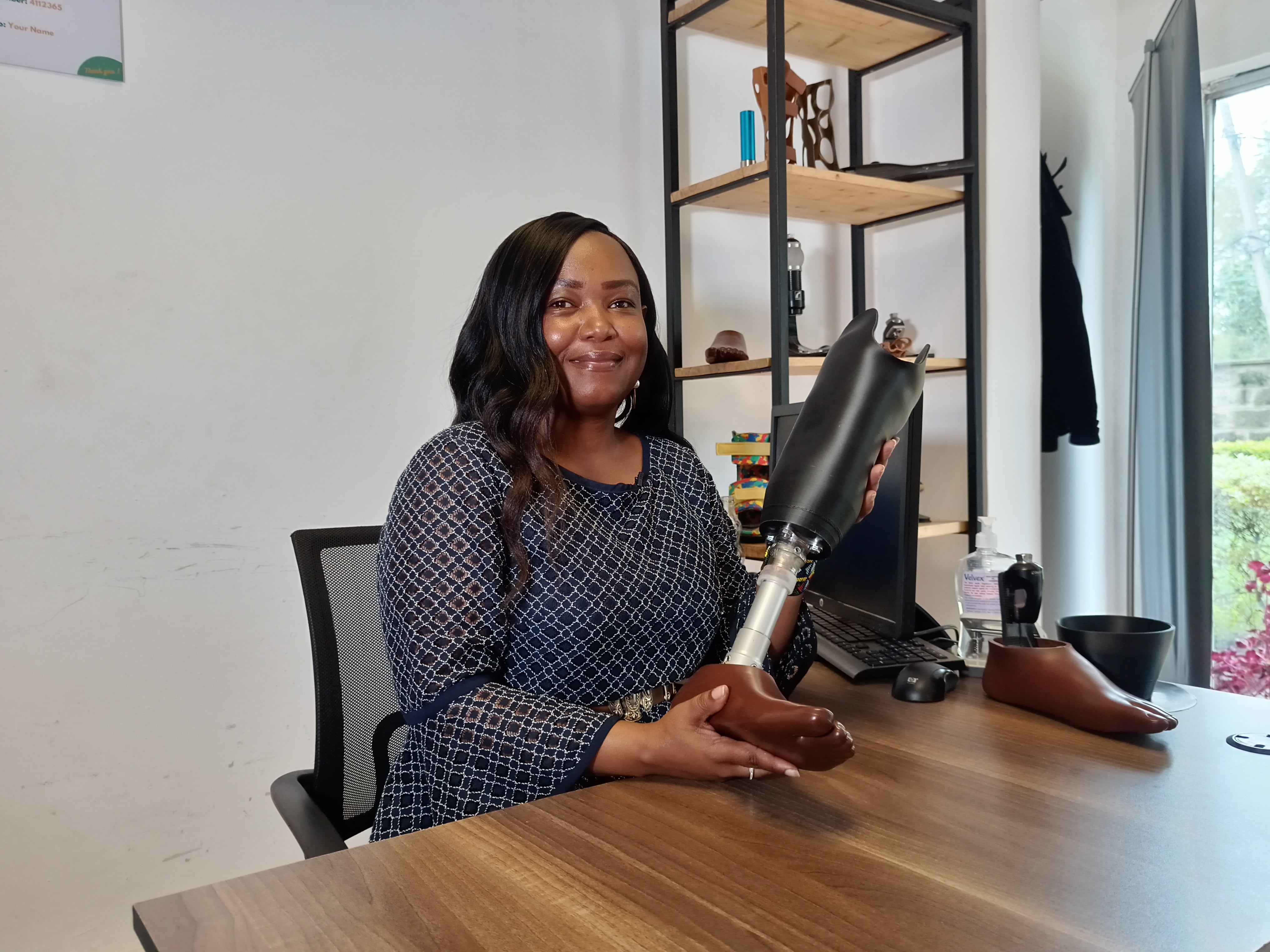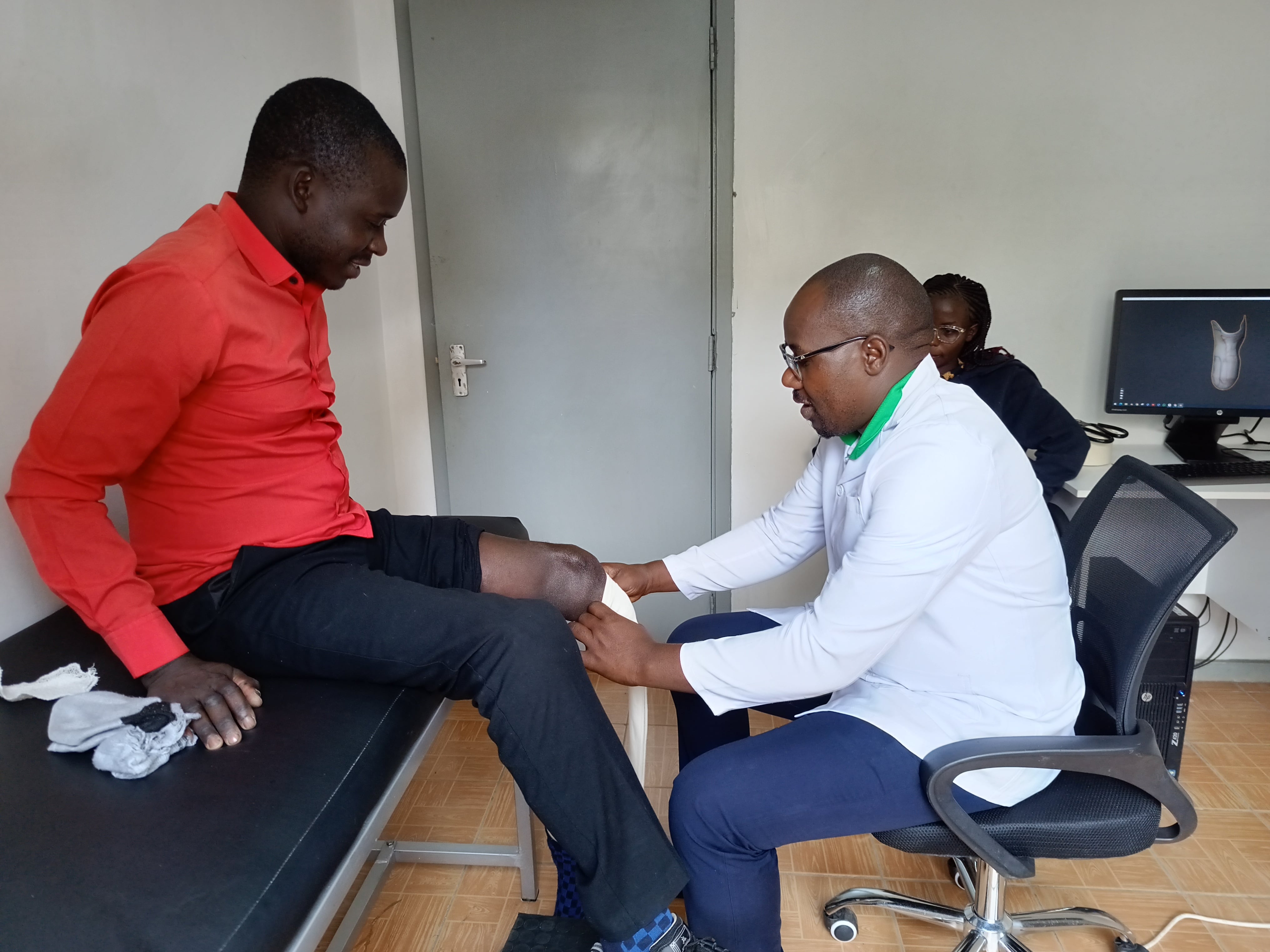
3D printing gives Kenyan amputees new lease on life
Tucked away in a leafy part of Nairobi’s Kilimani area is a small boutique-style clinic, Prothea. Banners outside promise would-be clients affordable high-quality prostheses and orthoses in Kenya.
Seated inside the clinic’s reception room is 26-year-old Belinda Adhiambo. She greets us with a cheerful hello and a generous smile, ushering us into the room.
Dressed in grey skinny jeans, a black T-shirt, an oversized light brown sweater, and black grunge boots, Belinda presents the image of a typical 20-something Nairobi woman.
Apart from a slight limp, it is not immediately obvious that she is an above-the-knee amputee, fitted with one of the 3D-printed prosthetic limbs the establishment specializes in making. At the age of three, Belinda was involved in an accident that resulted in an amputation.
She grew up in Kibera, one of Africa’s largest informal settlements and home to some of Kenya’s poorest communities.
However, what Kibera lacks in infrastructure, comfort, and accessibility, it compensates for with a strong sense of community and a general sensitivity to each other’s struggles.
“I have been in other communities like Dandora and they all but throw you out of the matatu once you arrive at your destination. However, in Kibera, they are considerate. The conductor yells out to the driver to give you time to get off, they say ‘Polepole dere! Haka ni kamayai’ (Slow down driver! This one is an egg!)”.
Well-fitting, modern prosthetics are hard to find in Kenya

She laughs at the memory and quickly explains that she knows the dark humor comes from a well-meaning place and therefore takes no offense.
“Since then, I’ve been using an assistive device. I’ve been changing the legs up to the state that I am in today. As you grow taller, you have to change the limbs,” she explains referring to her artificial limb, “Like if I gain weight, I have to change, if I lose weight I have to change it, I grow taller, I have to change.”
The prosthetic limbs she’s had to use over the years have been uncomfortable, made from material that is not durable and heavy.

In Kenya, well-fitting prosthetics, and durable prosthetics are rare finds. Dr. Nick Were, co-founder of Prothea Kenya explains.
“It all started about ten years ago when my dad had his leg amputated and we really struggled to find a well-fitting prosthetic device. It inspired me to look for available options and I found 3D printing and the ability to customize based on what he needed.”
Were later became a doctor and realized that most amputees fall through the cracks in healthcare, a situation he attributes to a lack of affordable prosthetics in the country.
“The main benefit 3D printing gives to a patient is customization, anything customized is expensive. We try to counter this by collaborating with other organizations and using materials that are durable and biocompatible, which means it does not irritate or harm the skin,’ said Dr. Were.
3D-printed prosthetics have led to an improvement in the quality of life of many amputees country-wide.
Double amputee says good prosthetics helped restore dignity

29-year-old Steve Ogola is a cobbler in Kibera. He is also a double amputee.
“There was a crowd of people squeezing through the train’s door. I was pushing myself to get in with them but there was little space. The train started moving and I was holding onto the handles by the door trying to get in. After a while, my hands and feet got tired, yet I still could not get in. I let go and landed on the tracks. The train wheel went over limbs, crashing them,” Steve recounts, his voice thick with emotion.
“It was tough because I was not used to using a wheelchair. As luck would have it, a friend, a medical student at the Kenya Medical Training College asked to use me as a part of an exam practical, the limbs the students made became my first prosthetic legs.”
He explains that the limbs made by the students were of low quality, but as fortune would have it a doctor at Kenyatta National Hospital later made him another pair that fit better.
“It is a bit hard to use them. My situation was critical because I was learning to use them on both limbs.”
Later, one of his old friends told him about Prothea, a company trying to meet the needs of people like him through 3D printing. Yet again, Steve earned another pair of limbs by testing out the innovative alternative.
He informs us that amputees using regular prostheses made out of wood have to deal with constant wear and tear, and weight that makes it difficult to move around. Today, he can walk for longer, rides a bike and engages in sports activities.
“The regular prosthesis cost upwards of 600,000 Kenyan shillings (approx. 4850 U.S. dollars) yet they are not good,’’ he said.
He says good prosthetics restore the dignity of amputees by saving them from being dependent on other people, people who are already avoiding them.
“Stigma is there! Stigma is there! When you are walking, you see people staring at you and drawing conclusions about your incapabilities,” he quips, adding that people in his position are already viewed as a burden so it lightens the burden when you can be mobile and earn a living.

3D printing offers holistic approach to helping amputees
Faith Njoki, a project manager at Prothea, says there aren’t many companies in Kenya that offer a holistic approach to helping amputees, catering to their physical and psychological needs. She reveals that most of the patients who come to them have either been in an accident, suffered a traumatic injury, or have lifestyle-related diseases. Therefore, addressing the trauma is the priority, and the first visit is dedicated to understanding the patient and their needs.
“I want to get people back on their feet, get them working again and doing the things they love again. Stigma comes in because people view them as amputees, we see them as people. It is not just about the limb, but a conducive family environment,’ said Njoki.
“When Belinda came to us, she was a patient. We just needed to change her prosthetic because the one she had was very heavy hence slowing her mobility. We got her a new above-the-knee prosthetic and now she can do normal things just like you and me who have all our limbs,” said Njoki.
This limb is also good for the environment. The hardy nature of the plastic ensures one uses it for a long time.
“It’s pretty much what you call clean and wear. Once you do the 3D scanning and they mold it and print it in a couple of hours. You have one print, so we don’t waste any material”, said Njoki.
According to Njoki, 3D-printing means the clinic can offer an artificial limb and physical therapy at a cost of between 300-600 U.S. dollars per patient, depending on the type of amputation. This is a leap from the typical 1,000-7,000 U.S. dollars per device market value.
Dr. Were tells us that in a year of 3D printing limbs, Prothea has made limbs for 100 Kenyans. He is now seeking to push the envelope by venturing into robotics.
“Just the other month we were happy to do our first myoelectric hand. This is basically a hand prosthesis where you’d put sensors on the muscles. These sensors enable you to use the prosthesis to do simple things like grabbing something or lifting a cup of tea. Just the simple things in life!”






